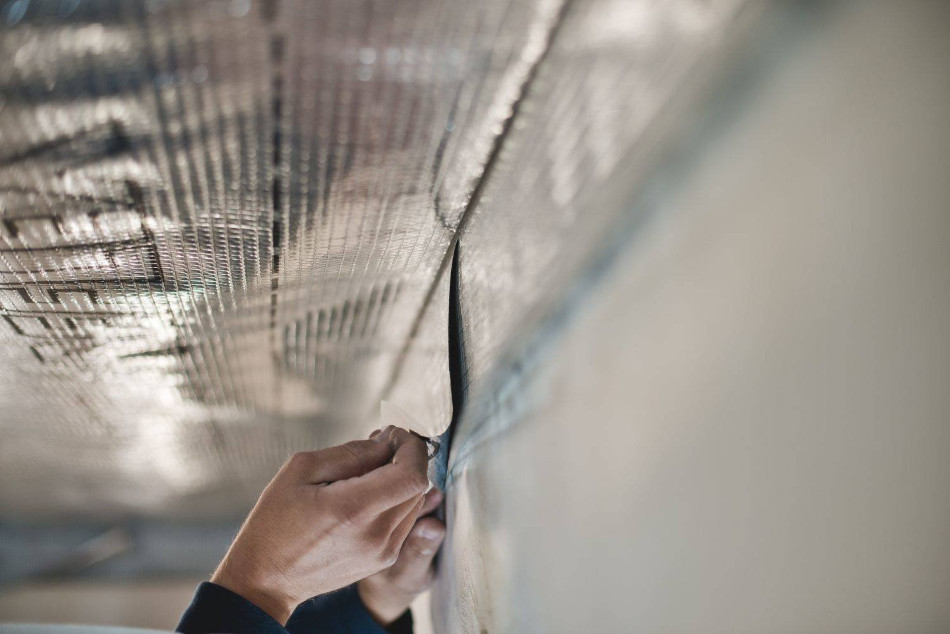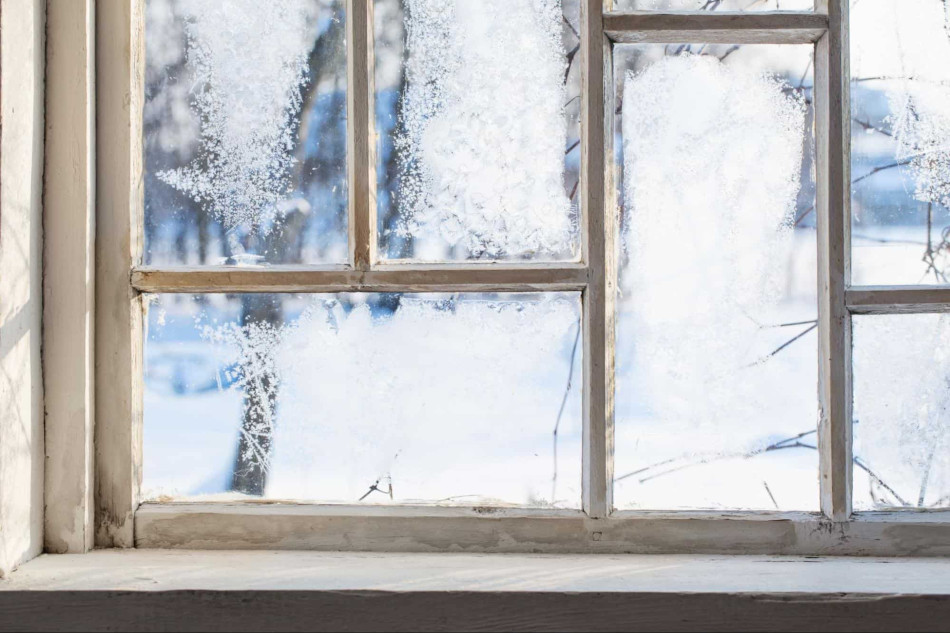
UNFACED OR FOIL FACED INSULATION? THAT IS THE QUESTION*
 Reading time: 4 minutes ǀ Simon Borrows
Reading time: 4 minutes ǀ Simon Borrows
The world is changing so fast and so are we. No wonder why we are looking for ever easier solutions, often products that solve 2 problems at once. Same with a insulation. When it comes to choose one, we will certainly want to find a product that will solve all our doubts. Foil faced insulation certainly is one of them. But before that, there was plain unfaced insulation. In this article we will try to show you all the differences between unfaced and foil faced insulation materials. We hope this will help you make the right decision. Let's Rock and Roll.

Pictrure credit:folnet.pl
 TABLE OF CONTENTS
TABLE OF CONTENTS
UNFACED OR FOIL FACED INSULATION. THAT IS THE QUESTION
UNFACED INSULATION. YEARS AGO THERE WERE NO OTHER OPTIONS
FOIL FACED INSULATION. GAME CHANGER PRODUCT
FOIL FACED INSULATION. IT CAN’T BE THAT GOOD. WHAT ARE THE DISADVANTAGES ?
UNFACED INSULATION. YEARS AGO THERE WERE NO OTHER OPTIONS
Standard insulation insulation works by trapping air within the insulation material. The purpose of this insulation is to slow the transfer of the heat from inside your home to outside… This story was dragged on for many years. We used to buy cheap insulation, we paid pathetic low money for its installation. And we used to pay relatively low gas bills. However, hard times were ahead.
Years ago, there was no need for a better insulation product, which certainly was unfaced insulation. Unfaced insulation was doing its job until a certain point. Global warming has given us hot summers. The sun's rays heat our attics to very high temperatures, reaching 40-50 degrees.

So unfaced insulation is no longer good enough. It heats up throughout its thickness, warm air finally begins to penetrate through its surface. Air conditioning units start to come into place. That's not all!
Many years ago we did not have modern technologies that would allow us to produce airtight windows such as Velux. In most cases the wind was blowing through the windows, and frost was coming through.

Picture credit:clerawindows.com
Rising gas bills forced us to buy modern windows, which in turn served us another problem such as condensation. The amount of steam produced could not be controlled anymore. Higher moisture levels simply started to penetrate deep into the structure of the building such as rafters or insulation itself.
Settling water vapour reduces the life of insulation. This means that it will be destroyed much faster than it should. We know well that water is the enemy of insulation. Even the smallest amount of it in a long time causes its complete destruction.
So we have come to the conclusion that we need a material that, in return will reflect heat like a mirror, and will not allow moisture to penetrate into its structure. What's else? There’s more to it than that…
Fibreglass or stone wool is often associated with itching and skin irritation. Back in the day, people didn't take care of their health the way they do today. So the need to create a completely new product arose. Therefore, foil faced insulation was invented.
FOIL FACED INSULATION. GAME CHANGER PRODUCT
Foil faced insulation is a real game changer. It affects the result of an insulation game very much. Foil faced insulation alters insulation business strategy and conceives an entirely new plan of action. Aluminium foil bonded to insulation has a big and important effect on insulation, usually making the difference between unfaced insulation.
Foil faced insulation not only slows the transfer of the heat but also acts like a mirror reflecting heat back to where it came from. In fact, it reflects about 95% of the infrared heat that hits its surface. Those 95% of the infrared rays that strike aluminium's surface are REFLECTED rather than ABSORBED(unfaced insulation). Aluminium foil bonded to insulation happened to be very handy to do just that!

Picture credit:environmentalcoatings.com.au
That's what would really work, because you're reflecting the heat before it even gets into your house.
Aluminium faced insulation can also work as a Vapour Control Layer called VCL. It can also be used as a vapour barrier as it is relatively waterproof and unaffected by moisture. Generally speaking, all foil-faced insulation such as Rockwool RW or Knauf RS range may be used as a VCL provided all joints are properly taped with a suitable foil tape. Foil faced insulation is typically used in first-time applications, such as in walls, ceilings and floors. Any time you use a faced insulation, the foil needs to be facing toward the living space. So in a loft the foil faces downward.
Foil faced insulation is generally blanket-like insulation that can be made out of fibreglass, stone wool, PIR, EPS or phenolic. Foil faced insulation consists of a vapour retarder (the facing) that will block moisture movement from one space to another. While unfaced insulation such as fibreglass can be itchy to install, foil faced insulation is a way better material to work with. It stops almost 80% of that horrible stuff that can get stuck in your lungs. It is also non-toxic and non-carcinogenic, making it safer and easy to install with the use of less safety equipment. The aluminium film also protects your eyes, especially when mounted in the ceiling.
Moreover, unlike unfaced insulation, it does not degrade over time due to compacting, disintegration, or from absorbing moisture.
Foil faced insulation comes in many formats such as:
- foil backed fibreglass wool,
- foil backed rock mineral wool such as Rockwool RW or Knauf RS,
- foil backed polystyrene (EPS),
- foil backed PIR such as Celotex or Kingspan.
FOIL FACED INSULATION. IT CAN’T BE THAT GOOD. WHAT ARE THE DISADVANTAGES ?
It is also worth to point out 3 main disadvantages of foil faced insulation such as:
- It is generally more expensive due to being a metal-based product.
- It is also important to note that in order for foil insulation to work correctly, it must be kept free of any dust. This means in some areas, such as roofs, it may require being cleaned of dust from time to time to ensure maximum efficiency. For this reason, it is best to keep the reflective side facing downwards or in a vertical orientation to prevent any dust or dirt buildups.
- There is the potential of reflective insulation becoming an electrical hazard should a wiring fault occur. After all, it is a metal and conducts electricity.
Related articles:
7 EASY TIPS FOR INSTALLING FOIL FACED INSULATION THE RIGHT WAY
MINERAL WOOL INSULATION. THE UGLY TRUTH?
HOW TO PREVENT WINDOW CONDENSATION
HOW TO CUT FIBREGLASS INSULATION
ROCKWOOL® HEAVY DENSITY INSULATION
*All the information provided in the content published on Insulationgo blog is for informational and educational purposes only. Insulationgo LTD makes every effort to ensure the accuracy and timeliness of the content, but we do not assume any responsibility for any errors or omissions.
The information presented on this blog should not be considered as professional advice or a substitute for consulting relevant experts. Before making any purchase decisions or taking action based on the information presented here, it is strongly recommended to contact the product manufacturer directly to verify the details and ensure its suitability for your specific needs.
By using this blog, you acknowledge and agree that Insulationgo LTD shall not be held liable for any damages, losses, or inconveniences arising from the use or reliance on the information provided herein. This limitation of liability applies to all users of the blog, including but not limited to visitors, readers, and subscribers.










































































































